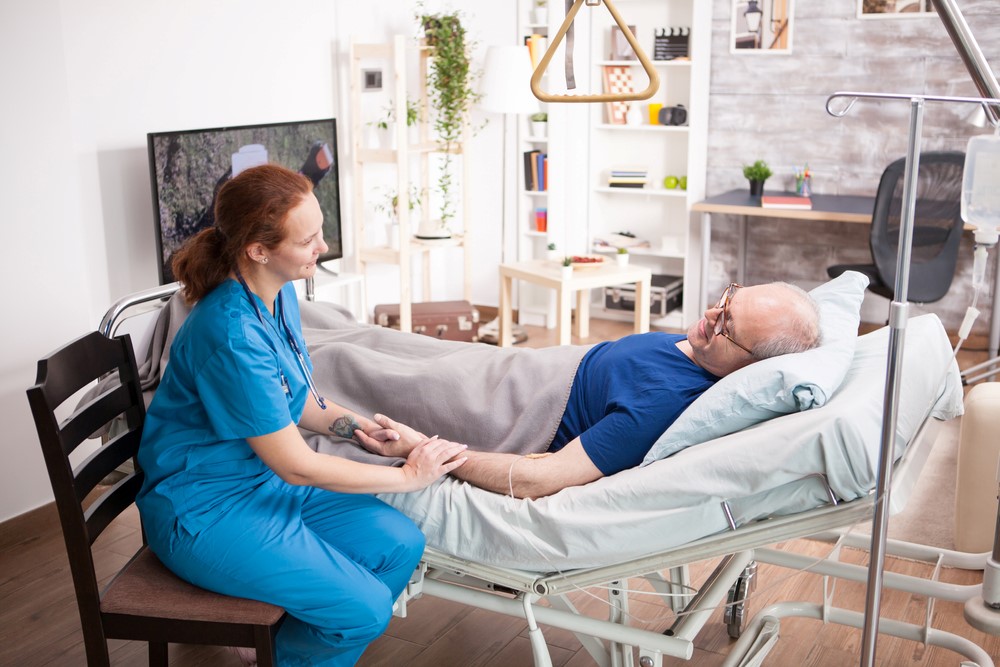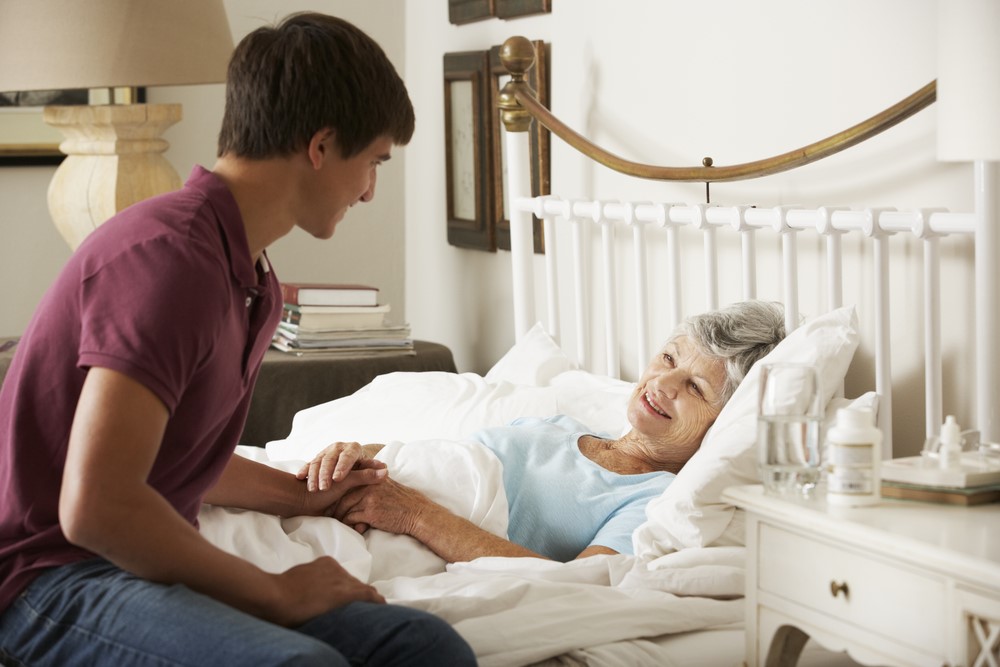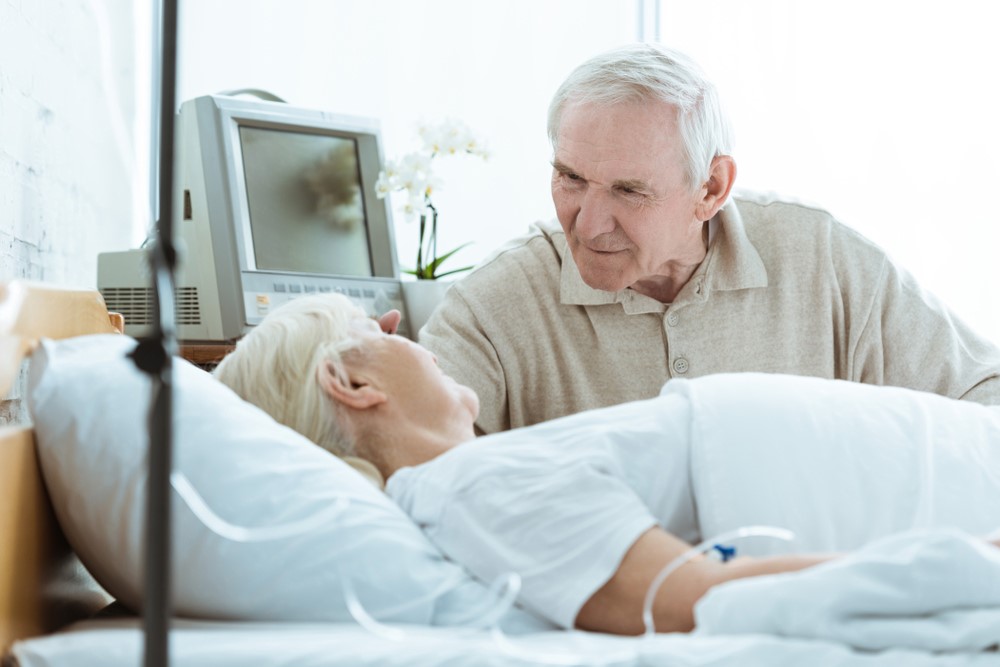
Hospice provides valuable palliative care for people at the end of their lives. It’s a time when the goal switches from helping them to get better, to making sure that the patient is comfortable and can die with dignity.
Hospice care can happen in many settings, including nursing homes. However, hospice at home is becoming particularly common.
The benefits are easy to see.
Hospice helps to reduce pain and discomfort, while providing practical and emotional support to patients and their families. A good hospice team can make the final months of a senior’s life much better than they would be otherwise.
Plus, hospice at home means the senior gets to die in a familiar environment. They don’t need to be in a hospital or a nursing home. This alone can be comforting.
Indeed, there are many amazing stories about how hospice made the world of difference for seniors and their families.
Is Hospice Giving Up?
Some caregivers feel guilty about looking into hospice.
There’s this idea that doing so means that you’re giving up on your family member. That you’re no longer willing to fight to keep them alive as long as possible.
Yet, calling hospice isn’t something to feel guilty about.
Pretending that your loved one isn’t near death won’t help them to live longer. In fact, staying in denial often makes things more difficult for everyone.
The longer you put off hospice, the less support your loved one gets and the longer they’re in pain.
We’re not just talking about practical assistance and pain management either. Hospice also helps patients and their families to come to grips with death.
The Benefits of Hospice at Home
Improved Quality of Life
One of hospice’s main goals is to improve the last months of a person’s life.
Pain relief is a massive part of this, especially as hospice has access to strong pain medications. This can even mean that seniors with severe conditions are pain free or experience very little pain.
There are other aspects too, including an entire team of staff to help with areas like emotional health, spiritual support, and a care plan, so that you know what to expect and when.
Provides A Familiar Setting
Hospice at home keeps seniors in an environment that’s comforting and familiar, which is reason enough for considering it.
After all, death is a scary topic in its own right. Having to face this in a hospital or a nursing home just makes everything even more difficult.
Many people also want to die in their own home. There’s something incredibly comforting about that idea. Hospice at home is one of the best ways to do this, as you get enough time to plan for the person’s death and time to spend with them.
There is Caregiver Support

Hospice at home relies heavily on family caregivers.
However, it also provides plenty of caregiver support. This includes caregiver respite, so you get regular breaks to focus on your own needs.
You will also get regular visits from the hospice team, including nurses, physicians, and volunteers. This support is much more than most caregivers get in other situations, making your role much easier.
Medicare Covers Hospice
Hospice services are paid through Medicare and many types of private insurance. Sometimes this means that your costs typically decrease when a loved one starts hospice.
This coverage is in place regardless of where the patient receives hospice.
However, Medicare doesn’t cover room and board as part of their hospice payment. So, if your loved one is in a memory care facility or assisted living, you’ll still need to pay that facility’s fees.
This makes hospice at home particularly appealing, as you have few fees to worry about.
The Risks of Hospice at Home
Despite all the positive features, there are also a few reasons to be wary of hospice care in the home.
There’s No Longer a Focus on Treatment
First of all, hospice is only powerful when seniors need it.
Specifically, seniors should only be in hospice when they have six months or less to live and there aren’t any viable treatment options.
The latter criterion is important, as hospice only focuses on palliative care. This means that medications and treatments to help cure the condition are stopped.
If you’re considering hospice, then there’s a good chance that your loved one has a terminal diagnosis and there are no other treatment options.
However, it’s still worth doing your due diligence before making any decisions. There are cases where people end up in hospice when they don’t need to be, which reduces their chance of recovering from the condition.
Thankfully, patients have the right to stop hospice and return to treatment.
These patterns show that it’s important to pay attention to what’s happening and regularly look for second opinions. This way you can make sure your loved one gets the best outcomes.
The Strain on Family Can Be Intense
Hospice involves an entire care team, which suggests that they do all the work.
Unfortunately, this often isn’t the case. Instead, a family caregiver will be designated, who is responsible for many practical aspects of care.
The hospice team does provide support, but you may only see them a few times a week.
The stresses and strains of this kind of care can quickly add up, even if your loved one’s needs are relatively minor. If they have more complex needs, such as being incontinent or unable to walk, then the situation can quickly get overwhelming.
Imagine how this goes if they end up living for more than six months.
The situation isn’t the peaceful and easy transition that you might expect. It can be emotionally scarring too, making it difficult to feel comfortable at home long after the loved one has passed away.
The Intensity Makes It Harder to Connect
Having to provide care can also take away from the experience of simply being there with your loved one.
You may also find that you’re often stressed and overwhelmed. You might even be reactive to your family members.
None of this creates a healthy environment for connection.
Plus, these last days are ones you’ll remember. Many people have regrets about what happened in the last days of their parents’ lives. Being constantly stressed and on edge only increases the risk that things will go badly.
There Are a Lot of Unknowns

Doctors, nurses, and hospice staff may sometimes predict how things are likely to go. Like, “she probably won’t last the week”.
You may even use these predictions to decide whether to have your loved one at home or who will provide care for her.
While predictions are useful, they’re also very limited.
Disease progression can be erratic. Some people die much sooner than was expected. Others hang on, sometimes to the point that they eventually leave hospice and start to be treated for their condition again.
It’s important to remember this when you’re making decisions.
What Should You Do?
To decide about hospice at home, you need knowledge.
This includes talking to your loved one’s physician and palliative care specialists about what the options are. Doing so may involve some pushing on your part, as not all staff are well-trained in end-of-life conversations.
Don’t stop with just one perspective either. Talk to different people from different specialties and start to build a picture of what your loved one’s needs are.
Also think carefully about who will physically support you loved one if they go through hospice at home. Is there someone who has the time, energy, and willingness to provide care?
What about your loved one’s condition? Is it suitable for at-home care? If, for any reason, hospice staff couldn’t visit for a few days, would things be okay?
For Current Caregivers
If you’re already caring for your loved one, then hospice at home is a logical next step.
The service will only make things easier for you by providing extra support and taking some of the financial strain off you.
Even so, it’s worth thinking about your current levels of stress and strain.
How are you finding caregiving? Is it going okay, most of the time, or do you frequently feel burnt out and overwhelmed? If it’s the latter, hospice at home could be a poor choice.
After all, if you’re barely coping with things now, how will you manage when someone you love is literally dying at home?
For Non-Caregivers
If you’re not currently a caregiver, then it’s worth being even more cautious about hospice at home.
You may not have a sense of just how intense caregiving can be.
If nothing else, try checking out some caregiving forums, like the one at AgingCare. These give you fantastic insight into the thoughts and feelings of actual caregivers.
Final Thoughts
Hospice gives seniors the chance to die in their own homes, while also providing support and keeping costs low for caregivers.
However, it’s not always the best choice.
Sometimes the pressure on caregivers can be far too much, to the point that they’re overwhelmed, often second-guessing themselves, and don’t have the energy to truly connect with their loved ones.
If the role seems like too much, you could look at a facility instead. A facility will cost more, as you need to pay for room and board, plus any other fees.
But, a facility does decrease the strain on you. It may also make your loved one’s last days better, as they are surrounded by skilled professionals.
Also, if your loved one is in a facility, you get the chance to simply be with them. Other people fill the caregiving role.
Need Support?
As a Death Doula, Angelica guides and supports families through the end-of-life experience, giving you an anchor and safe space every step of the way.

Leave a Reply